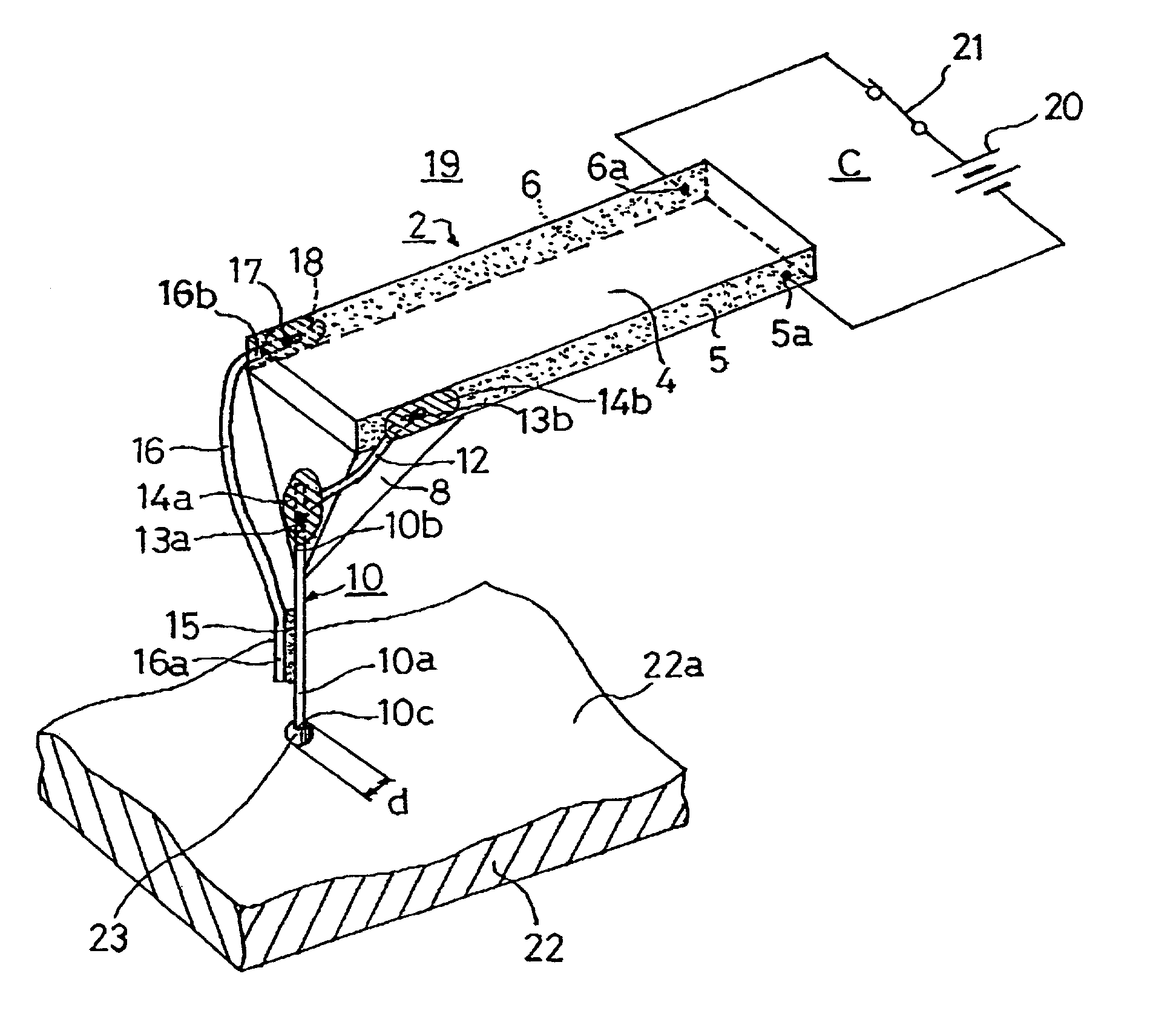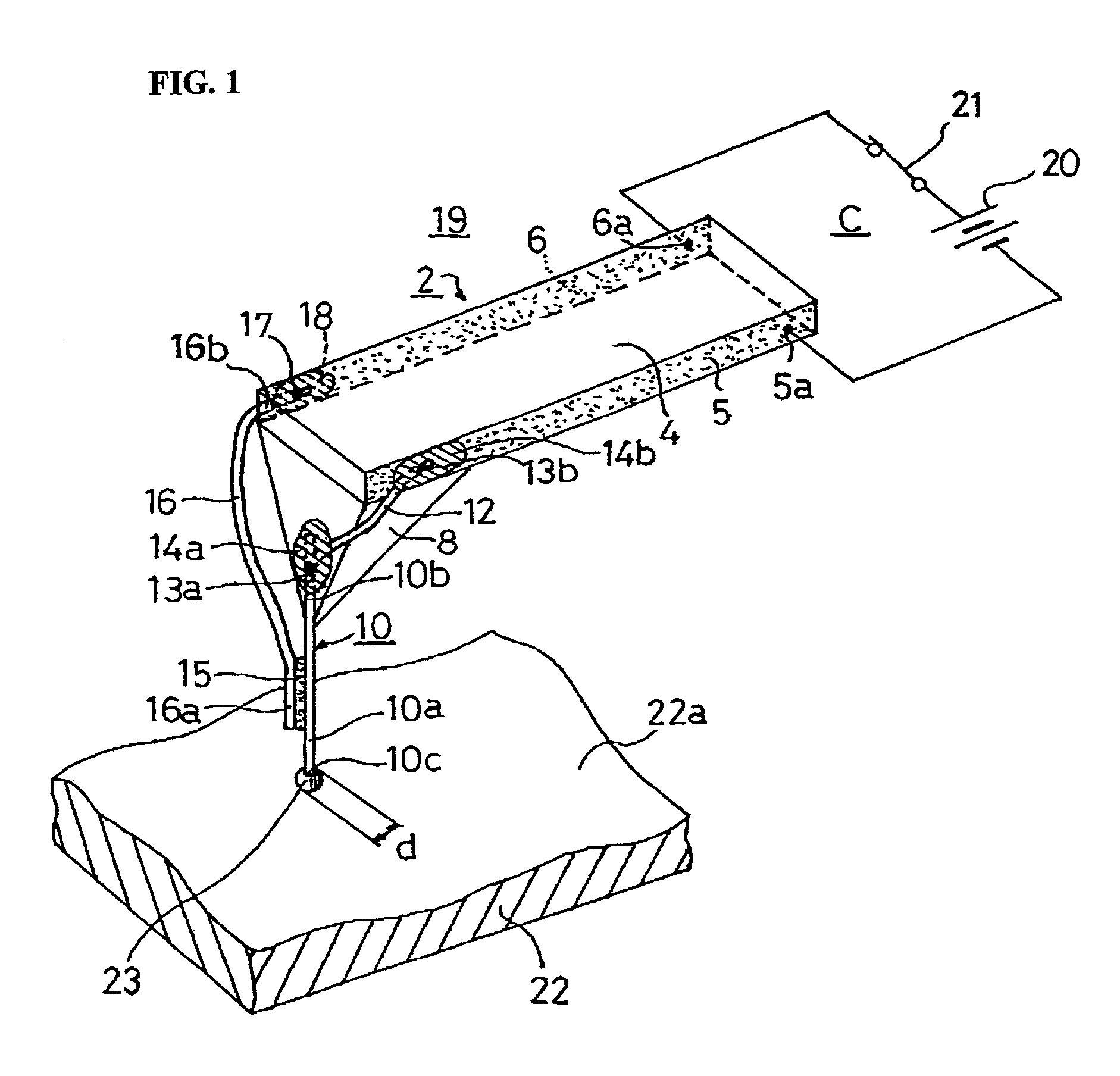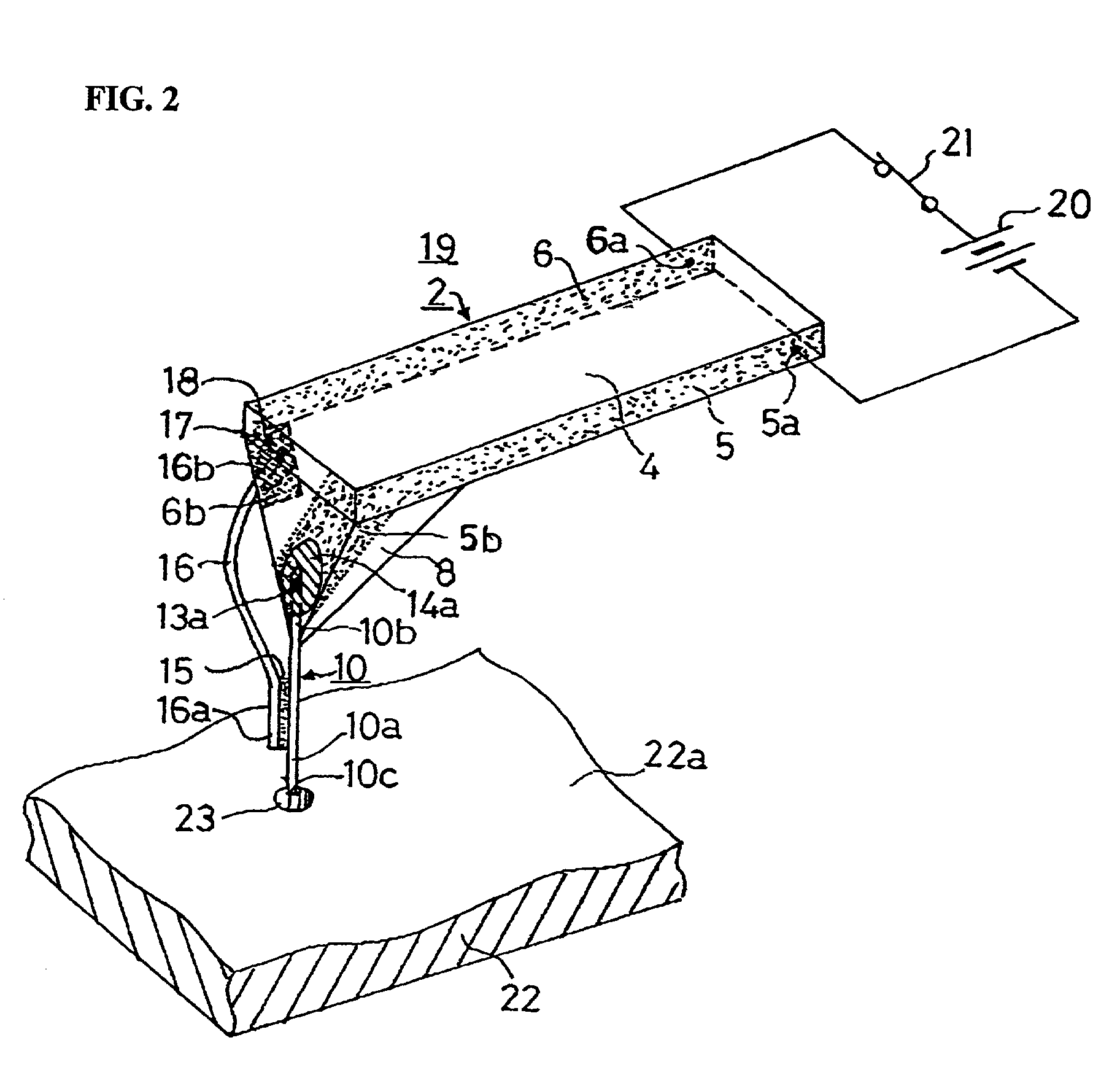Heat emitting probe and heat emitting probe apparatus
a technology of heat emitting probes and probes, which is applied in the field of heat emitting probes and heat emitting probes, can solve the problems of limited thermal measurement of general sample surfaces on the nano-scale, the difficulty of controlling the diameter of holes to a value of several tens of nm or less, and the inability to achieve the recording density of conventional thermal recording media utilizing afm cantilevers, etc., to achieve the effect of increasing the recording density of thermal recording media
- Summary
- Abstract
- Description
- Claims
- Application Information
AI Technical Summary
Benefits of technology
Problems solved by technology
Method used
Image
Examples
first embodiment
[0044]FIG. 1 shows the heat emitting probe of the present invention.
[0045]As in the conventional heat emitting probe, the heat emitting probe 19 is obtained by machining an AFM cantilever 2. The cantilever 2 is comprised of a cantilever portion 4 and a holder 8 (which is also referred to as a protruding portion or pyramid portion), and the holder 8 protrudes from the tip end of the cantilever portion 4.
[0046]Electrode films 5 and 6 are provided on both side surfaces of the cantilever portion 4. These films are formed by coating the side surfaces of the cantilever portion 4 with a conductive substance. A control circuit C is connected to the rear end portions of the electrode films 5 and 6 via contact points 5a and 6a. The control circuit C is comprised of a power supply 20 and a switch 21.
[0047]A conductive nanotube probe needle 10 is disposed on the holder 8. The conductive nanotube probe needle 10 is obtained by fastening the base end portion 10b of a conductive nanotube to the ho...
second embodiment
[0065]FIG. 2 shows the heat emitting probe of the present invention.
[0066]Elements that are the same as in the first embodiment are referred to with the same reference numerals, and a description of such elements is omitted. The second embodiment differs from the first embodiment in that joining electrode films 5b and 6b are formed on the holder 8. Of these two films, the joining electrode film 5b is installed instead of the conductive nanotube lead wire 12.
[0067]More specifically, the joining electrode film 5b is electrically continuous with the electrode film 5. Accordingly, voltage application to the conductive nanotube probe needle 10 is made possible merely by fastening the base end portion 10b of the conductive nanotube probe needle 10 by means of the coating film 14a. In other words, there is no need for the conductive nanotube lead wire 12, fused portion 13b or coating film 14b. Thus, the second embodiment is characterized in that it is possible to dispense with the process ...
PUM
| Property | Measurement | Unit |
|---|---|---|
| curvature radius | aaaaa | aaaaa |
| diameters | aaaaa | aaaaa |
| diameter | aaaaa | aaaaa |
Abstract
Description
Claims
Application Information
 Login to View More
Login to View More - R&D
- Intellectual Property
- Life Sciences
- Materials
- Tech Scout
- Unparalleled Data Quality
- Higher Quality Content
- 60% Fewer Hallucinations
Browse by: Latest US Patents, China's latest patents, Technical Efficacy Thesaurus, Application Domain, Technology Topic, Popular Technical Reports.
© 2025 PatSnap. All rights reserved.Legal|Privacy policy|Modern Slavery Act Transparency Statement|Sitemap|About US| Contact US: help@patsnap.com



